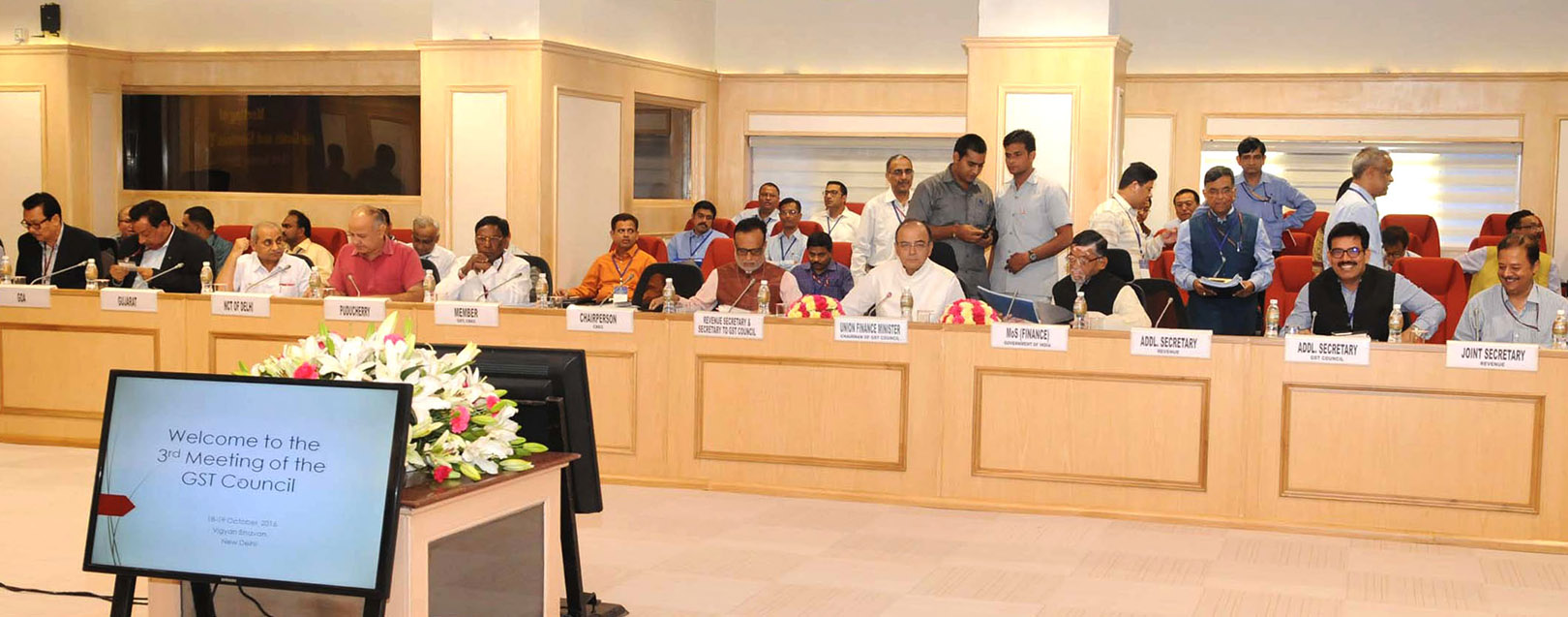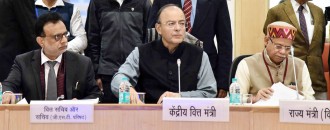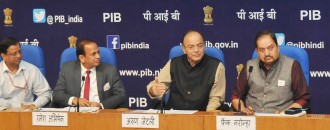
GST Council discusses 4-tier tax rate, cess on demerit goods
PTI
A four-slab GST tax structure of 6, 12, 18 and 26 per cent with lower rates for essential items and the highest for luxury goods that will also be levied with an additional cess was mooted on Tuesday at the GST Council meet.
With a view to keep inflation under check, the proposal sponsored by the Centre proposed to continue exempting food items from tax as well as keep 50 per cent of the common use goods in either exempt category or lower band.
Also, 70 per cent of the items is proposed to be governed by 18 per cent of lower GST rate. But ultra-luxury items like high-end cars and demerit goods like tobacco, cigarettes, aerated drinks, luxury car and polluting items would attract an additional cess on top of the 26 per cent GST rate.
A 4 per cent GST rate was suggested on gold. FMCG and consumer durable products would attract 26 per cent GST rate, against the current incidence of around 31 per cent.
The all-powerful GST Council, headed by Finance Minister Arun Jaitley, on Day 1 of its three-day meet reached consensus on the formula for payment of compensation to states from any loss of revenue from implementation of Goods and Service Tax (GST) in the first five years beginning April 1, 2017.
The panel that also includes representatives of all states, agreed on keeping base year for calculating the revenue of a state at 2015-16 and considering a secular growth rate of 14 per cent for calculating the likely revenue of each state in the first five years of implementation of GST, Jaitley told reporters here.
States getting lower revenue than this would be compensated by the Centre.
The GST Council discussed five alternatives of GST rate structure, he said, adding no decision was taken and discussions would continue tomorrow.
While the cess on luxury and de-merit items would be used to create a Rs 50,000 crore fund to compensate states for loss of revenue, the Centre was not ready to include state tax breaks to calculate GST compensation, state officials said.
Explaining the rate structure proposed by the Centre, Revenue Secretary Hasmukh Adhia said taxation of services would, however be only in the 6 per cent, 12 per cent and 18 per cent with the higher rate at 18 per cent.
"The principles of fixing the rate would be it should be inflation neutral, states and centre continue with their expenditure and tax payers are not burdened," Jaitley said.
Once the rate structure is finalised, the technical group of state and Central tax officers will discuss which item would fall in which tax bracket.
"So far between the last two meetings and today, we have been one by one reaching a consensus on each issue and so far all decision have been taken by a consensus.
"And the object is to keep on discussing and re discussing even when there are no agreement on the first instance and take as many decision possible by consensus and to the extent possible avoid a situation where we have to put an issue to vote. So far we have achieved that objective," he said.
Jaitley said while arriving at the 14 per cent revenue growth rate for calculation of compensation, at least five options were discussed. These included nominal GDP growth rate, or best three years of state revenue growth from previous five years, or average of three years.
It was also discussed to consider average of previous five years or look into the revenue growth after excluding the outliers in the past five years.
"The range of revenue growth based on all these formulations came between 10-18 per cent... It was then decided that one middle path be adopted which will be 14 per cent," Jaitley said.
As regards the rates, he said five options on rate structure were brought before the council. "... Eventually you must reach the target of revenue collection which you are otherwise likely to reach in 2017-18," he said.
The Council also discussed whether exemptions given by states should be included in the definition of revenue for base year 2015-16.
"The Council decided that only in the case of these special category states (eight North East and three hill states) it would be included in the definition of revenue for base year 2015-16.
"No other additions which were being proposed to be added to the meaning of the word revenue and therefore the issue of definition of revenue as of 2015-16, the decisions were concluded in the Council today," Jaitley said.
The GST Council is likely to arrive at the final rate structure tomorrow and on the next day would discuss who will tax the 11 lakh service tax assessees.
"The principles of fixing the rate would be; it should be inflation neutral, states and centre continue with their expenditure and tax payers are not burdened," Jaitley said.
FMCG and consumer durable products would attract 26 per cent GST rate, against the current incidence of around 31 per cent.
Adhia further said that the Rs 50,000 crore pool that would be created out of cess on demerit goods would be used to compensate the states for revenue loss.
Of that, Rs 26,000 crore is expected to be garnered from clean energy cess and the remaining from tobacco and their items.
Kerala Finance Minister Thomas Issac said his state wanted the highest rate to be fixed at 30 per cent so that common man items can either be exempt or levied with lower rates.
The compensation to states would be "limited to taxes subsumed into GST," he said.
Haryana Finance Minister Abhimanyu Singh said the Council discussed the possibility of imposing cess on luxury items to create a compensation fund.
Delhi Deputy Chief Minister Manish Sisodia said some states have opposed the 26 per cent tax slab as per the Centre's proposal.
"There has been a consensus on the compensation formula," Sisodia said.
Uttar Pradesh Skill Development Minister Abhishek Mishra said his state would want to have a lower tax rate and one that increases transparency.






 to success.
to success.